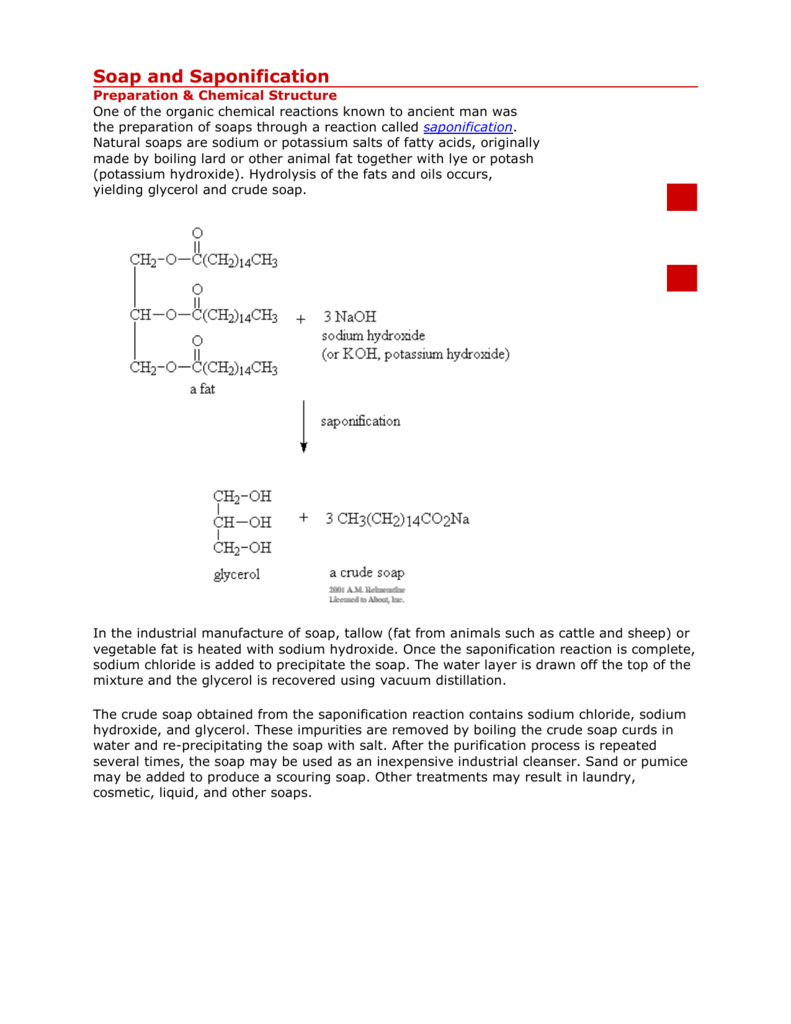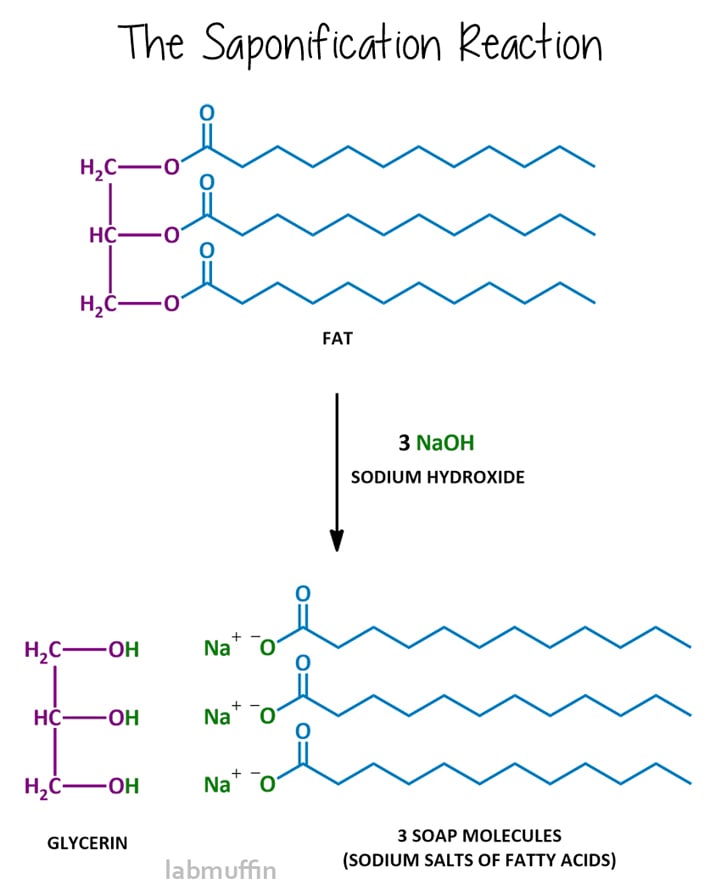Saponification Lab Handout Hydrolysis of Triglycerides Synthesis of Aspirin. Shake the tubes briefly and observe how well the oil is emulsified in each.
Saponification In Soap Making Coloring Pages - If you're looking for picture and video information linked to the key word you've come to visit the ideal blog. Our site provides you with hints for seeing the highest quality video and image content, hunt and find more enlightening video articles and graphics that match your interests. comprises one of thousands of movie collections from various sources, particularly Youtube, therefore we recommend this movie for you to view. This blog is for them to stop by this website.
Soap Making Saponification Reaction Here R Is The Long Chain Download Scientific Diagram
Make your solid soap at home using a cold saponification processI share with you my favorite recipe to make handmade soap after months of testsIngredients.

Saponification in soap making coloring pages. And for even more information in Erica Pencess online classes here and here she delves deep into trace and the uses of different types of trace. In a separate pot heat the oils until they are liquid. Its important to follow proven soap recipes.
Saponification or SAP as it is sometimes known is the conversion of fat either solid or liquid oils into soap with the use of a liquid alkali. In soap making terms this is called trace. If youve done much cooking youll know that water and oil really do not like to mix.
Saponification is a chemical reaction between oil and lye when making soap. Saponification occurs once the oil and lye molecules create new soap molecules. Emulsification dissolving of Oils.
The reaction is called saponification. Start date mar 14 2013. They safely remove germs soils and other contaminants and help us to stay healthy and make our surroundings more pleasant.
Dissolve the lye in water. This will color the water which will add color to the soap without the extra powdersspeckles. Label one beaker soap and one beaker detergent.
Saponification-The process of Making Soap. Soap Making 5 Procedure 1. When soap makers mix their lye water into a vat of oil what they are doing is really just this simple process of mixing a base with an acid.
Add 2 oz of caustic soda to your soap. It is the hydrolysis of fats or oils under basic conditions to get the glycerol and the salt of the corresponding fatty acid. The saponification process involves boiling fats or oils with concentrated sodium hydroxide solution or concentrated potassium hydroxide solution to produce glycerol and the salts of fatty acids which are the soaps.
During saponification ester reacts with an inorganic base to produce alcohol and soap. You simply substitute the amount of tea for the same amount of water in the recipe. Heat both beakers together on a hot plate.
The Saponification Reaction. Soaps are just potassium or sodium salts of long-chain fatty acids. Download 160 Superfatting In Soap Making Coloring Pages PNG PDF File This excess oil provides your this process also acts as a type of insurance or buffer making sure that your soap will not come out lye heavy.
Soap has reached trace when a spoonful of soap batter is. Contributed by Kathryn Haas. Each oil has its own saponification value or the amount.
Generally it occurs when triglycerides are reacted with potassium or sodium hydroxide lye to produce glycerol and fatty acid salt called soap. Add 5 mL of distilled water to one tube 5 mL of your soap solution to another and 5 mL of your detergent in the last tube. Associate Professor Chemistry at Saint Marys College Notre Dame IN.
You will perform soap making practical as well in chemistry lab of your school in class10. To study the saponification reaction for preparation of soap. If you are a visual learner this Soap Queen TV episode explains the saponification process visually.
Saponification is simply the process of making soaps. Soaps are prepared by hydrolysing fats or oils under alkaline condition. Place 4 drops of mineral oil in each of three tubes.
Saponification forces these two compounds to come together which also produces your soap. Mix the lye solution with the liquid oils and stir until they thicken. Soaps and detergents are essential to personal and public health.
As any kid playing with vinegar and baking soda knows when you mix an acid and a base together you get a reaction. The term Saponification literally means soap making. There should be no substituting oils in ANY soap recipe.
The other option is to make an infusiontea in the water portion of the soap making process. Saponification is important to the industrial user for it helps to know the amount of free fatty acid that is present in a food material. Put 100 ml of laboratory water in each beaker.
SAP requires 3 main ingredients for this to happen our oils fat lye alkali and water. Each type of oil requires a different amount of lye to produce the complete reaction. Dissolve 2 g of the moist soap from Part 1 use the leftover soap from your beaker in Part 1 in the boiling water of your beaker labeled soap.
Saponification definition saponification reaction saponification value are some of the important topics for your CBSE Class 10 Board Exam perspective also. About Press Copyright Contact us Creators Advertise Developers Terms Privacy Policy Safety How YouTube works Test new features Press Copyright Contact us Creators. If you are using more than one type of oil in a single soap recipe do the above step for each oil used on the saponification chart and then total your results together to get the total amount of lye needed.
Once its complete theres no lye left in the mixture.
Soap Saponification Charts Cold Process Soap Recipes Diy Soap And Shampoo Essential Oil Chart
Pin On Education Experiments Helpful Learning Tips
Soap Making Process Youtube
Soap And Saponification
Pin On Soap Making
Make Your Own Soap Part 1 The Chemistry Behind Soap Making Lab Muffin Beauty Science
Saponification Soap Making And Other Things
The Chemistry Of Clean Make Your Own Soap To Study Soap Synthesis Science Project
Saponification An Overview Sciencedirect Topics







